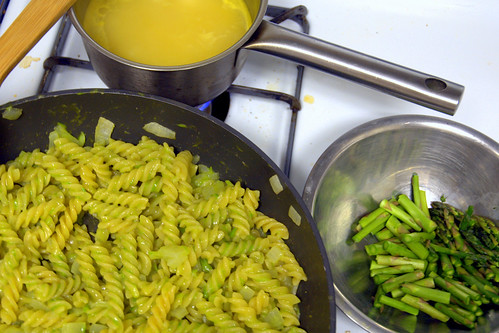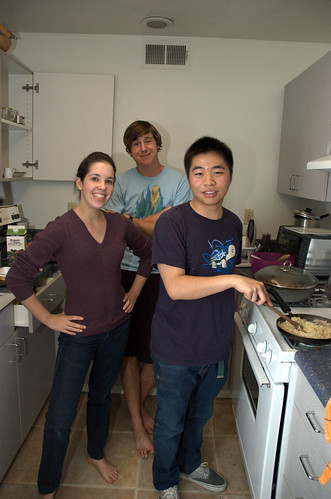The garden groundbreaking was yesterday, and I'm still overwhelmed by the amount of work that we accomplished. After breakfast and some speeches, about 200 UC Irvine students, staff and community members put together 35 beds, moved 10 tons of gravel and 5 tons of dirt. It was amazing to participate in a project that optimized itself. Each task group, like bed construction or dirt hauling, set the first derivatives of their respective equations to zero, and - on their own, without explicit leadership - became more efficient as the day went on. Yesterday was one of the happiest and most exciting day of my life.
This post isn't about the groundbreaking though.This post I want to dedicate to answering some basic questions about the garden. Questions that I wish we had addressed during the speeches yesterday. If you have other questions, let me know, and I will add them to this post.
What is the goal of the garden?
The primary goal of the garden is to provide UCI students an opportunity to learn about the food system through garden volunteering, workshops, and curriculum integration. Food production is NOT a priority. The garden is an extension of the classroom; it is not a farm.
Who gets to use the garden plots?
UCI already has a few plot-based gardens - they're very popular (Anthill Village Community Garden has a year long waitlist of over 100 people). We're not trying to compete - in fact, no single student will be alloted a single plot. There's no way we can meet the interest through plot rental.
Our garden will operate more like an urban farm - where the garden volunteers and coordinators have a global jurisdiction over all the plots. (See the last question for more information.)
Why a garden?
There are many reasons. Here are a few good ones. (1) We're the last UC without a student-run urban garden. (2) There's a lot of gardening interest at UCI - we have over 1000 hours of pledged gardening from the student body! (3) A garden can provide educational opportunities in three way - through passive exposure to the student body, and active participation in gardening or in workshops.
Why in Arroyo Vista Housing, on an old Volleyball Court?
Finding land for the garden was one of the hardest steps in establishing this project. All the land at UCI has been alloted for something since the early 90s. The Anteater Garden Initiative had virtually no choice in space. After months of negotiations, the former volleyball court turned construction storage was the ONLY choice offered by the administration.
We know that the Arroyo Vista Student Council voted for the garden to cover the south end of the Arroyo Vista field, and NOT the volleyball court. We were really happy to have the support of the AVSC, and we were ready to begin construction on the field. Unfortunately, Student Affairs and the Arroyo Vista Housing Office (Director Harvey) ignored the AVSC's vote, and offered the volley ball court as the only option.
The garden wants to maintain a positive relationship with the AV Residents and the Greek community, despite this conflict of interest.
How will the garden volunteering work?
Sign up at our
website! Garden scheduling will be bi-quarterly (twice-a-quarter). After assessing every volunteer's availability, and hosting a couple of orientation events, we will have regular gardening hours a few times a week, coordinated by a garden commission volunteer coordinator. Throughout the quarter, all volunteers and volunteer coordinators will meet on a biweekly or monthly basis to address garden agenda.
Who is allowed to garden?
All UC Irvine Community Members registered as trained volunteers (training will be offered at the beginning of every biquarterly volunteering cycle.
Who decides what food is grown, and where the food goes?
This garden is student run and student funded. It makes the most sense for the garden volunteers to decide what is grown, and how the harvest will be used at the end of the season.
How can I get involved?
Sign your email up at our ASUCI website - www.asuci.uci.edu/garden
You'll shortly be contacted by a volunteer coordinator to evaluate your availability, and let you know when the next volunteer orientation will be. There are also a lot of internship and leadership opportunities through the Garden Commission - the ASUCI entity that is in charge of running the background work, logistics, funding, budgeting, purchasing, coordinating, organizing, etc. If you're interested in getting more involved in the leadership, shoot us an email! garden@asuci.uci.edu
Have another question? Put it in the comments, and I'll add it to this post!



























